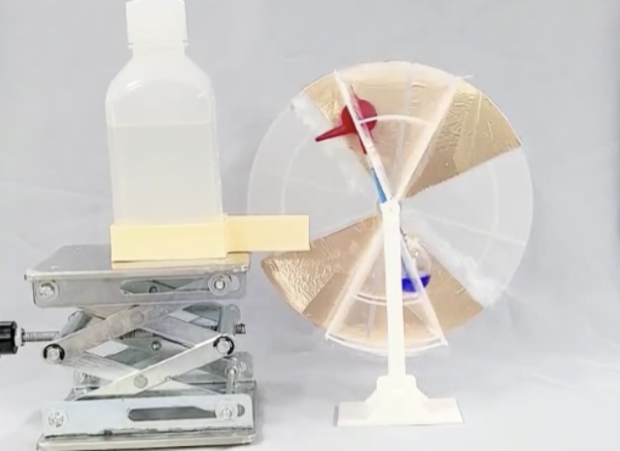"Drinking bird" science class toy plays integral role in new clean energy idea, study shows
Scientists in Hong Kong and China have proposed a creative way to generate renewable energy —using a classic "drinking bird" figurine that may feel like a throwback to high school physics class.
They outlined their approach in a new study published Thursday in the online journal Device. With a "drinking bird" as a generator, the scientists said they were able to successfully harness energy created through the natural process of water evaporation and convert it into electricity. According to the study, this "drinking bird" system was ultimately able to produce an output voltage of more than 100 V, which sets it apart from other studies attempting to explore the efficacy of water evaporation as a clean energy source.
It's an innovative idea that suggests a fairly basic energy conversion mechanism —in this case, one that converts heat energy into mechanical energy— can harvest the energy released through water evaporation using the evaporation's own latent heat and something called the triboelectric effect. That's the transfer of electric charges that occurs between two objects when they touch or slide against each other.

The study's authors said their research "provides a practical method for powering small electronic devices using evaporation energy."
"The drinking bird triboelectric hydrovoltaic generator offers a unique means to power small electronics in ambient conditions, utilizing water as a readily available fuel source," said Hao Wu, a professor at South China University of Technology who co-authored the study, in a statement. "I still feel surprised and excited when witnessing the actual results."
The "drinking bird" is a teaching tool that for a time cropped up often in early physics lessons, as it was used to demonstrate the basics of thermodynamics, which focuses on the relationships between heat and other fundamental forms of energy. When placed behind a cup of water, the bird, with its head doused in water initially, would eventually tilt forward over the edge and appear to "drink" from the cup, before swinging back upright and then repeating the same pattern of movements again.
Although it looked in some ways like a toy, students learned that the "drinking bird" was actually a simplified heat engine. The apparatus was relying on gravity shifts and a series of thermodynamic processes, including evaporation, temperature shifts and subsequent pressure changes to catalyze, and sustain, its own movement. In order to do that, the "drinking bird" was harnessing different energy types from each of those processes and converting it into the mechanical energy it needed to swing back and forth.
The "drinking bird" in the scientists' renewable energy model works in a similar way, and the device behavior in and of itself has always mirrored organic behaviors that occur on Earth. If an unusual model like this one proves effective, the opportunities for electricity generation could be enormous. Energy generation through natural water evaporation is equal to about half of the energy absorbed globally through sunlight, and, as the study points out, the organic evaporation process involves some of the "most significant amount of energy transfer" on the planet.
Others in the scientific community have for years explored the potential value of harnessing the power of natural evaporation, with another report published in the journal Nature Communications in 2017 acknowledging the massiveness of the energy flux involved in evaporative processes worldwide. Different research groups have proposed varying methods to use evaporation as a clean energy source, and some have offered creative suggestions —like one involving tree transpiration— to reduce costs and improve electricity output while still remaining renewable.
For their next research phase, Wu said that he and his colleagues will design a tailored "drinking bird" to use in additional test, instead of using the commercial figure.
"Additionally, we will explore various application opportunities for this device," said Zuankai Wang, a professor at Hong Kiong Polytechnic University and one of the study's co-authors, in another statement. He said their goal is to deliver "a practical product that can be used in our daily lives."
- In:
- Electricity
- Science
- Clean Energy
Emily Mae Czachor is a reporter and news editor at CBSNews.com. She covers breaking news, often focusing on crime and extreme weather. Emily Mae has previously written for outlets including the Los Angeles Times, BuzzFeed and Newsweek.
Twitter InstagramDisclaimer: The copyright of this article belongs to the original author. Reposting this article is solely for the purpose of information dissemination and does not constitute any investment advice. If there is any infringement, please contact us immediately. We will make corrections or deletions as necessary. Thank you.
Title:"Drinking bird" science class toy plays integral role in new clean energy idea, study shows
Url:https://www.investsfocus.com







